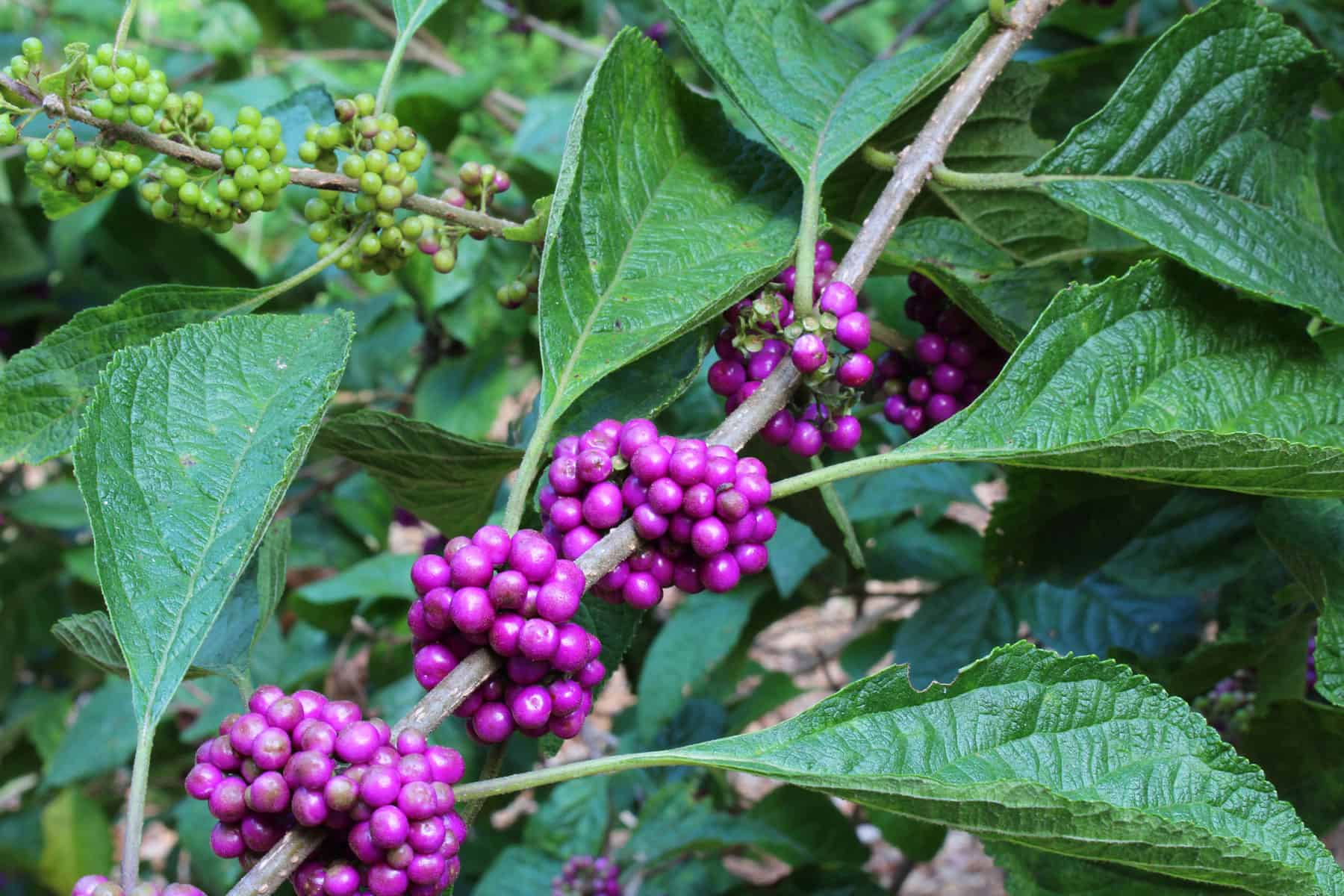[ad_1]
American Beautyberry is a surprising plant in your fall yard. It attracts birds and completely different wildlife who feast on its good purple berries.
Throughout the spring, American Beautyberry is a reasonably unassuming nevertheless participating woody perennial shrub. Barely aromatic leaves appear on its upright, arching stems, adopted by small flowers in late spring and summer season that assist many pollinators.
Nonetheless in early fall, American Beautyberry transforms from run-of-the-mill to the star of the yard. Its foliage turns to mild yellow, and iridescent purple berries (drupes, technically) appear in its leaf axils. Some varieties have white, rose, or blue berries.
As fall marches on, the leaves drop and the berries are left alone on the stems when there could also be little else to attract your eye in your fall yard. The berries persist successfully into winter besides eaten by wildlife like birds, foxes, opossums, and completely different mammals (which is commonly the case).
The place and when to plant American Beautyberry
Native to the southeastern U.S., American Beautyberry may very well be grown in hardiness zones 7-11 and in zone 6B if winter won’t be too chilly or the plant is protected towards a deep freeze.
In its native habitat, American Beautyberry is found rising throughout the open, in meadows, thickets, woodlands, or on the edges of swamps. Inside the home yard, it must be planted in spring in a sunny or calmly shaded area and in any soil that drains successfully and has a great deal of pure matter. It can’t tolerate deep shade.
American Beautyberry Repairs
American Beautyberry has few desires or points if planted inside the best location.
- In late winter or spring, take away earlier canes to rejuvenate the shrub for the showiest present of berries, as flowers and fruit appear on new shoots.
- To ensure that you additional compact progress, reduce the shrub to 12″ above the underside in late winter.
- If left alone, it’s going to become a naturally tall, woody shrub.
- All through a summer season drought, the shrub may defoliate and lose rising fruit.
American Beautyberry Traits
| Official Title | American Beautyberry (Callicarpa americana). |
| Plant Type | Deciduous shrub (loses leaves in winter). |
| Plant family | Lamiaceae (mint). |
| Hardiness Zones | 6b-10 (might need some security all through chilly winters in zone 6). |
| Native range | Southeastern and central United States, Northern Mexico, Bermuda, Cuba. |
| Prime | 3-6 Ft (as a lot as 9 toes in favorable conditions). |
| Unfold | 3-6 toes. |
| Photo voltaic | Full photo voltaic to mild shade (will not be going to tolerate deep shade). |
| Bloom Time | Small lavender, white or pink flowers bloom all by means of summer season and assist many pollinators. |
| Fruit | Appear in fall. Usually purple, nevertheless some varieties are white, rose, or blue. Fruit manufacturing is additional plentiful on shrubs in full photo voltaic, and little fruit appears on crops in shade. |
| Repairs | Mild. Little have to be executed after the plant is established. |
| Water use | Few. Comparatively pest and disease-free. |
| Bark | Simple. Mild brown on earlier wood, reddish brown on youthful wood. |
| Attracts | Small lavender, white, or pink flowers bloom all by means of summer season and assist many pollinators. |
| Curiosity | Shiny purple berries persist through winter if not eaten by wildlife. |
| Points | Wild birds, raccoons, armadillos, opossums, squirrels, and foxes eat the berries. Deer graze on the foliage. |
See the video on American Beautyberry from North Carolina Sea Grant.
Sources: Missouri Botanical Yard, North Carolina State Extension, Faculty of Florida, Clemson Cooperative Extension, Wikipedia.
[ad_2]
